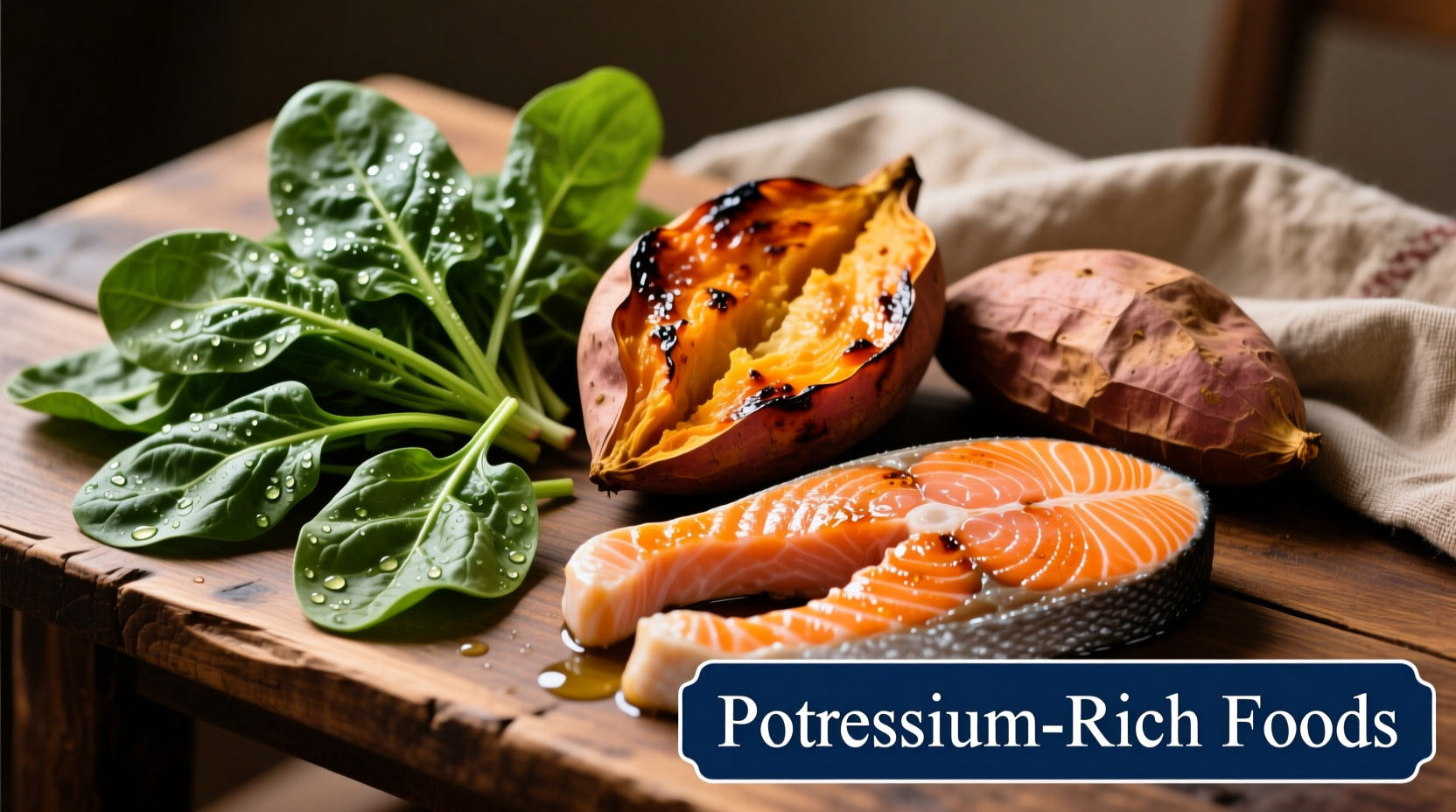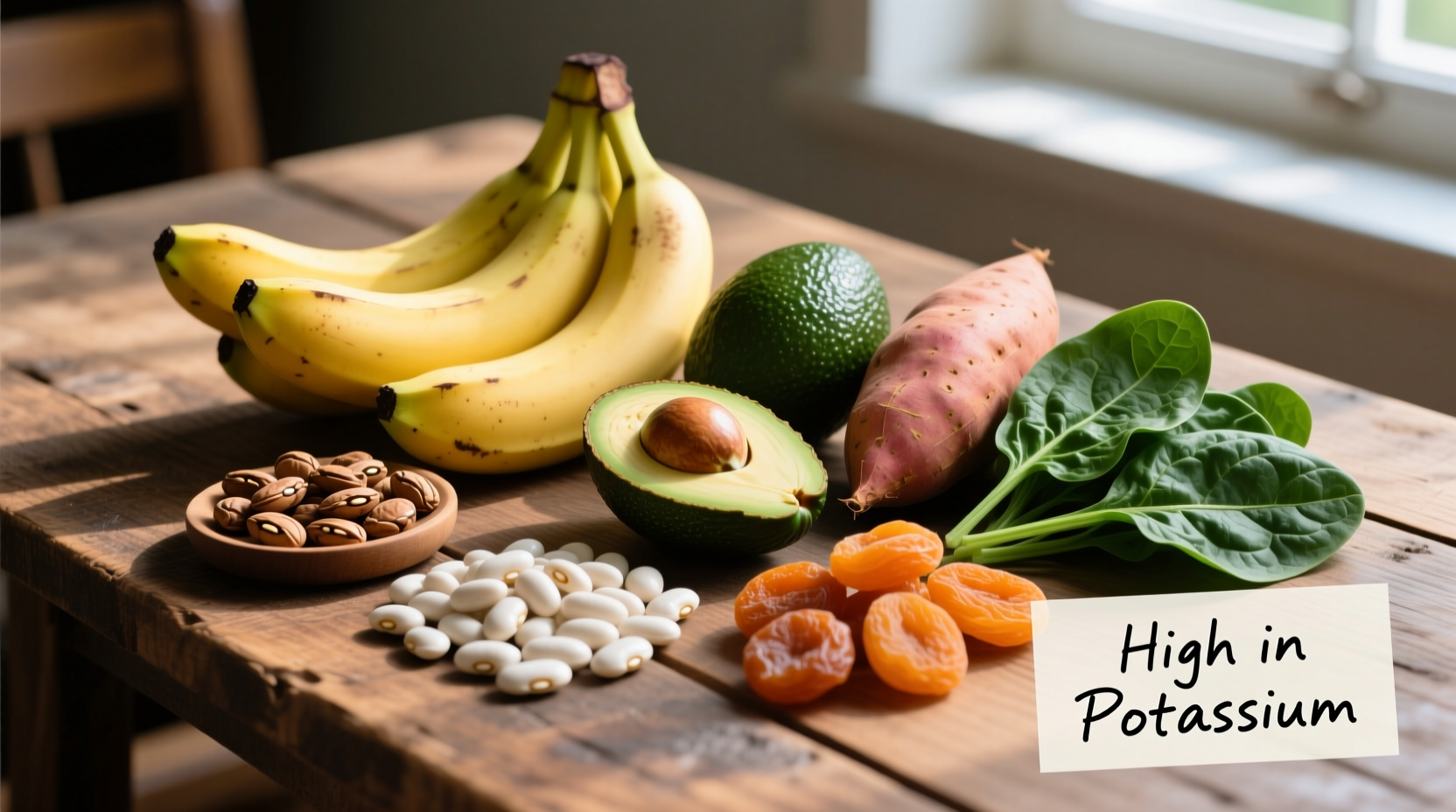Top potassium-rich foods include sweet potatoes (542mg per medium potato), white beans (1,189mg per cup), salmon (683mg per 6oz), spinach (839mg per cooked cup), and avocados (708mg per whole fruit). Adults need 2,600-3,400mg daily according to the National Academies of Sciences, Engineering, and Medicine. Potassium supports heart health, muscle function, and blood pressure regulation.
Discover exactly which foods deliver the most potassium per serving and how to incorporate them into your daily meals. This guide provides scientifically verified potassium values from USDA FoodData Central, helping you optimize your diet for better cardiovascular health and muscle function without supplements.
Why Potassium Matters More Than You Think
Potassium isn't just another mineral—it's your body's electrical conductor. This essential electrolyte maintains fluid balance, enables nerve transmission, and supports proper muscle contraction. Research from the National Heart, Lung, and Blood Institute shows adequate potassium intake can reduce stroke risk by 24% and lower blood pressure in hypertensive individuals.
Unlike supplements, whole food sources provide potassium alongside complementary nutrients that enhance absorption. Bananas get all the attention, but they're not even in the top 10 potassium powerhouses. Let's explore the most potent natural sources verified by nutritional science.
Your Potassium Powerhouse Shopping List
Based on USDA's comprehensive nutrient database, these foods deliver exceptional potassium density per typical serving. We've organized them by practical meal categories to match your daily eating patterns:
Breakfast Boosters
- Spinach omelets (1 cup cooked spinach = 839mg)
- Yogurt parfait (1 cup plain Greek yogurt = 255mg + berries)
- Avocado toast (½ avocado = 487mg on whole grain bread)
Lunch & Dinner Stars
- White bean soup (1 cup canned = 1,189mg)
- Salmon fillets (6oz cooked = 683mg)
- Sweet potato fries (1 medium = 542mg)
Smart Snacks
- Tomato juice (1 cup = 527mg)
- Dried apricots (½ cup = 755mg)
- Edamame (1 cup shelled = 900mg)
| Foods High in Potassium | Amount Per Serving | Percent Daily Value |
|---|---|---|
| White beans (1 cup) | 1,189mg | 25% |
| Spinach (1 cup cooked) | 839mg | 18% |
| Salmon (6oz) | 683mg | 15% |
| Sweet potato (medium) | 542mg | 12% |
| Banana (medium) | 422mg | 9% |
This potassium food chart reveals why diversifying your sources beats relying on bananas alone. According to the USDA FoodData Central, many vegetables actually contain more potassium per calorie than fruits. Notice how white beans deliver nearly three times more potassium than bananas while providing complete plant protein.

Tailoring Potassium Intake to Your Needs
Daily requirements vary significantly by life stage and health status. The National Academies established these science-based recommendations:
- Adults (19-50 years): 2,600mg (women), 3,400mg (men)
- Pregnant women: 2,500-2,900mg
- Older adults: 2,600-3,400mg (critical for maintaining muscle mass)
Athletes require 10-20% more potassium to replace what's lost through sweat. The Journal of Nutrition reports that endurance athletes lose 200-800mg potassium per hour during intense activity, making potassium-rich post-workout meals essential for recovery.
Practical Integration Strategies
Transforming this knowledge into daily habits requires smart planning. Try these chef-tested techniques that maximize potassium retention:
- Steam instead of boiling vegetables to prevent potassium leaching (up to 50% loss in boiling water)
- Keep skins on potatoes and sweet potatoes where potassium concentrates
- Combine potassium sources like spinach salad with avocado and white beans for synergistic effects
- Use tomato paste instead of fresh tomatoes in sauces for concentrated potassium
Professional chefs recommend building "potassium anchors" into each meal—designating one high-potassium food as the centerpiece around which you construct balanced dishes. This approach ensures consistent daily intake without meticulous tracking.
Important Considerations for Special Populations
While potassium benefits most people, certain health conditions require careful management. Individuals with chronic kidney disease must often restrict potassium intake because impaired kidneys can't remove excess potassium effectively. The National Kidney Foundation recommends working with a renal dietitian to determine safe levels.
Medications like ACE inhibitors or potassium-sparing diuretics can cause potassium buildup. If you take these medications, consult your physician before significantly increasing potassium-rich foods. For most healthy individuals though, whole food potassium sources pose no risk—the body efficiently regulates excess through urine.
Maximizing Your Potassium Benefits
The magic happens when potassium works with other nutrients. Pair potassium-rich foods with magnesium sources (like nuts and seeds) for enhanced cardiovascular protection. The American Heart Association notes this combination improves blood vessel function more effectively than either mineral alone.
Remember that processing dramatically reduces potassium content. Fresh and frozen vegetables retain nearly all their potassium, while canned versions lose 30-50% to the liquid. When using canned beans, rinse thoroughly to remove excess sodium while preserving most potassium.











 浙公网安备
33010002000092号
浙公网安备
33010002000092号 浙B2-20120091-4
浙B2-20120091-4